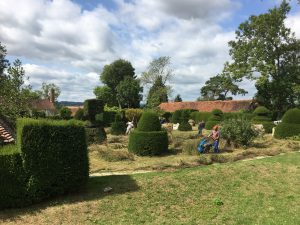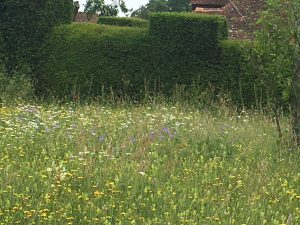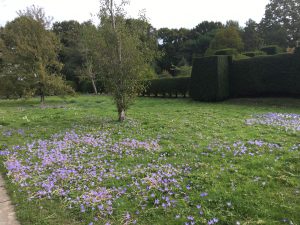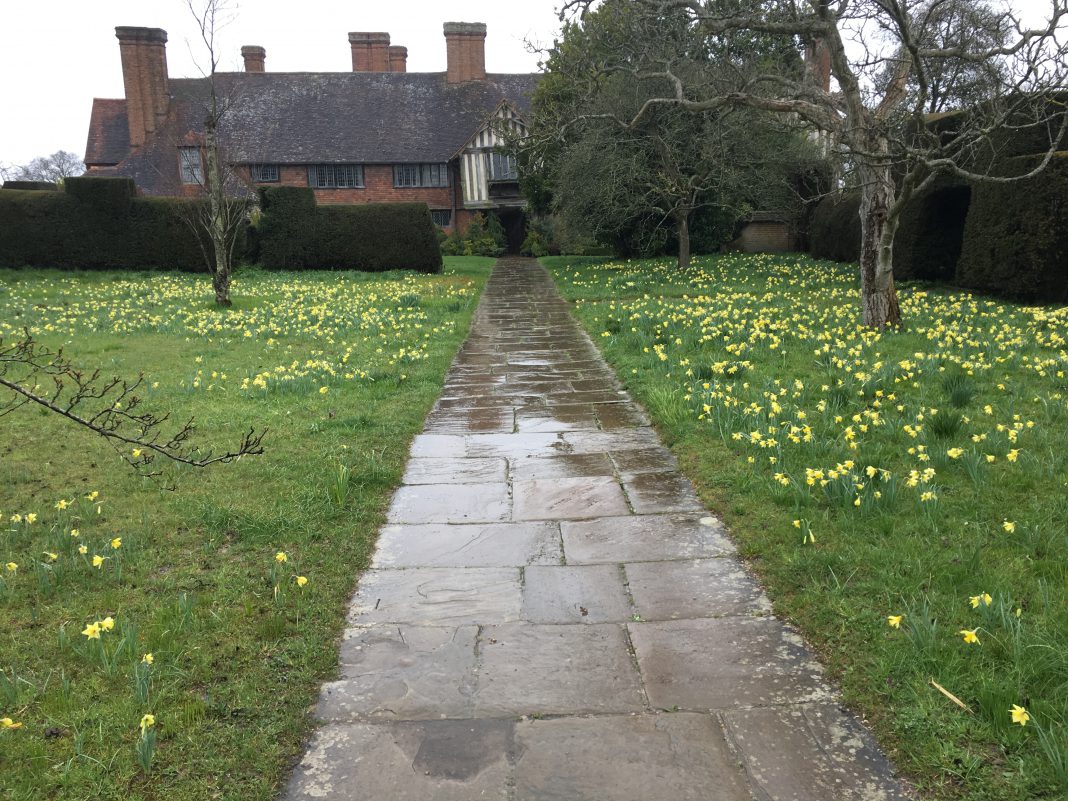I read with interest a little while ago about a planning proposal to make a wildflower meadow on one strip of the Salts in Rye. The reaction to this proposal was not very positive, and because I work at Great Dixter House and Garden in Northiam, which has wonderful meadows, I wondered why. In particular, I saw that in its newsletter the conservation society opposed the planning application, for a number of reasons. All the pictures in this article are of meadows and meadow strips at Great Dixter over a season.
The meadows at Dixter were started by one of the owners, Daisy Lloyd, at the beginning of the last century, to join the formal gardens and the rural landscape together. There are different locations there, open meadows at the edges of the property, ones each side of the straight York stone paved drive and in what was originally a very formal topiary garden with a mowed grass lawn. The topiary is still there, the mowed grass is not and it gives a very different perspective to the formal bushes when the meadow underneath is in full bloom in the early summer.

The importance of strips of managed meadow to the benefit of our beleaguered wild life, especially the nectar-loving bees and the other pollinators, without which we will be unable to grow our own food in the longer term, has recently been highlighted, for example in one BBC Gardeners’ World programme.
Wildlife needs physical connections between its habitats. Biodiversity is a really important part of land management and the development of wildflower meadows is a part of this. So, how is it done?
I know from my own observations and on talking to the gardeners at Dixter, that a wild flower meadow, which is the overall aim of the Salts proposal, takes some putting together and regular ongoing maintenance year on year.
The original grasses have to be ploughed up and the soil fertility has to be kept low. It will need to be seeded and a splendid little plant called yellow rattle introduced. Yellow rattle, a semi parasitic annual, attaches to the roots of vigorous species and prevents them from taking over the wild flowers and the meadow grasses.
The meadows at Dixter are full of bulbs in the spring, which have naturalised the space over the years. In the early summer, the variety of flowers and grasses is beautiful and it will be full of bees and butterflies and late summer into early autumn will turn the planting in to seed heads and browning foliage, which this is not to all tastes, but I personally love the scents and the buzz of the insects in the grasses.

It needs to be cut each autumn and the mowings left for a short period to let the seeds drop. No fertilisation of any kind. Immediately after, it looks much like an ordinary mown lawn, probably more to the taste of the tidier amongst you! But a mown grass lawn would not be nearly so productive over the whole year!
Another question I wondered about, as the Salts is a public space, was whether people would be able to walk in the meadow. It seems the answer is no, because then it would be difficult for the wild flowers to colonise the area, but a central path solves that problem, and the scent of the hay is really wonderful as you brush past and you can see the tapestry of the grasses and flowers as you walk by.
So, having made my (admittedly brief) enquiries what conclusions have I reached? I think it would be perfectly possible to set up a meadow, but it would definitely take time to establish and would need careful management. It couldn’t be left to itself. So much would depend on the expertise of those setting it up and managing it.

At certain times of the year, it would be absolutely glorious, at others more ‘untidy’ but much more interesting and vibrant than a strip of green turf. Worries about seeds infiltrating the bowling green? Tough. I am sure the green keeper could manage it, at Dixter the next area to the front meadow is mown grass and whilst obviously not such good quality as the bowling green, which is beautifully cared for, it could be done.
If the Salts is not the place, then where? Is this idea to be thrown quite literally in to the long grass? Meadow strips and wild flower patches are desperately needed. Surely Rye can do better than just dismiss this. Or possibly not.
References: Meadows at Great Dixter and Beyond: Christopher Lloyd. Revised Edition Pimpernel Press 2016. ISBN 978-1-910258-03-3
Wealden Times WT210 Jane Howard. Fables from the Farm P.142 August 2019.
Rye Conservation Society Letter, June 7 2019 BO/32 Town Salts
Image Credits: Gillian Roder .



